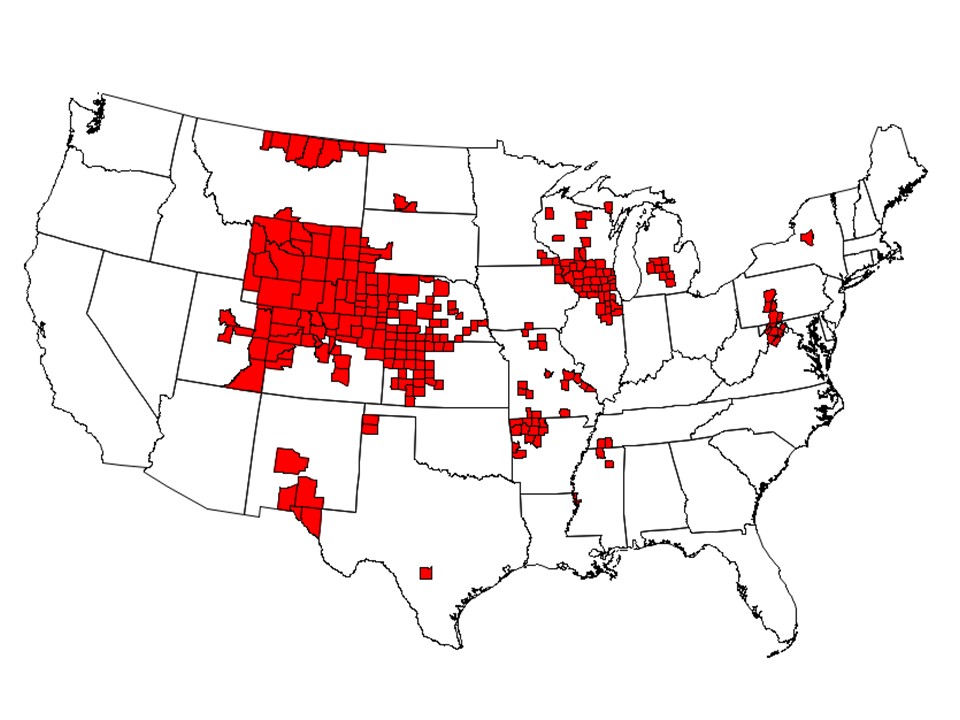
CDC
WASHINGTON, D.C. – As of January 2019, CWD (Chronic Wasting Disease) in free-ranging deer, elk and/or moose has been reported to the Centers for Disease Control and Prevention (CDC) in at least 24 states, including Kansas, in the continental United States, as well as two provinces in Canada. In addition, CWD has been reported in reindeer and moose in Norway and Finland, and a small number of imported cases have been reported in South Korea. The disease has also been found in farmed deer and elk.
Primarily in western Kansas, 27 counties, including Ellis County, have reported CWD:
Cheyenne
Decatur
Ellis
Finney
Ford
Graham
Gray
Grove
Hodgeman
Jewell
Kearny
Logan
Meade
Ness
Norton
Pawnee
Phillips
Rawlins
Rush
Scott
Sheridan
Sherman
Smith
Stafford
Thomas
Trego
Wallace
CWD was first identified in captive deer in the late 1960s in Colorado and in wild deer in 1981. By the 1990s, it had been reported in surrounding areas in northern Colorado and southern Wyoming.
Since 2000, the area known to be affected by CWD in free-ranging animals has increased to at least 24 states, including states in the Midwest, Southwest, and limited areas on the East Coast. It is possible that CWD may also occur in other states without strong animal surveillance systems, but that cases haven’t been detected yet. Once CWD is established in an area, the risk can remain for a long time in the environment. The affected areas are likely to continue to expand.
Nationwide, the overall occurrence of CWD in free-ranging deer and elk is relatively low. However, in several locations where the disease is established, infection rates may exceed 10 percent (1 in 10), and localized infection rates of more than 25 percent (1 in 4) have been reported. The infection rates among some captive deer can be much higher, with a rate of 79% (nearly 4 in 5) reported from at least one captive herd.
